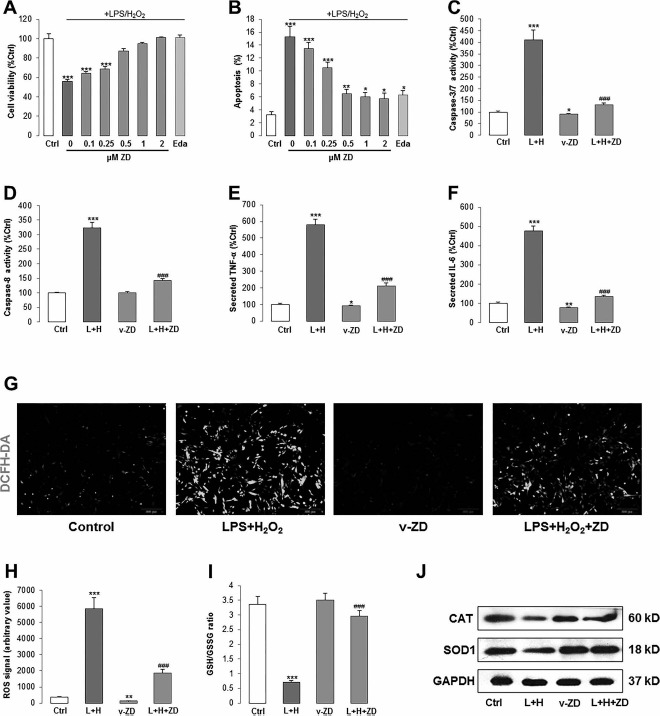Figure 1.

ZD ameliorates cell injury induced by LPS and H2O2 in hADMSCs. (A, B) Measurement of cell viability and apoptotic ratio after different doses of ZD (gray column) with or without LPS/H2O2 coincubation (dark gray column). A proven stem cell protective agent, edaravone (light gray column), was used as the positive control. (C, D) Activities of caspases 3/7 or caspase 8 from cell lysates after LPS/H2O2 incubation with or without ZD cotreatment. (E, F) Secreted TNF-a and IL-6 level changes after LPS/H2O2 incubation with or without ZD cotreatment. (G, H) Intracellular production of ROS was detected by fluorescence probe DCFH-DA (200x) after LPS/H2O2 incubation with or without ZD cotreatment. (I) Changes of ratio between glutathione (GSH) to oxidized glutathione (GSSG) and (J) Western blot for the expression of CAT and SOD1 after LPS/H2O2 incubation with or without ZD cotreatment. The treatment duration is 24 h. *p < 0.05, **p < 0.01, ***p < 0.001 mean significant changes between control and treatments, respectively; ###p < 0.001 means significant changes between indicated treatment with LPS/H2O2 incubation group. L + H, LPS/H2O2; Eda, edaravone; v-ZD, vehicle-ZD treatment; Ctrl, control; ZD, zeaxanthin dipalmitate; hADMSCs, human adipose-derived mesenchymal stem cells; LPS, lipopolysaccharide; TNF-α, tumor necrosis factor-α; IL-6, interleukin-6; DCFH-DA, 2′,7′-dichlorofluorescin diacetate; CAT, catalase; SOD1, superoxide dismutase 1; GAPDH, glyceraldehyde 3-phosphate dehydrogenase; ROS, reactive oxygen species.
